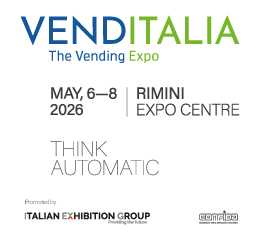Share your coffee stories with us by writing to info@comunicaffe.com.
Maurizio Giuli, Executive for corporate strategy Simonelli Group Spa, talks about the coffee market in Italy in an extract from the book CoffeExperts, the encyclopedia book focused on coffee we talked about here. Soon in these pages, there will be other insights from the various coffee expert authors who contributed to the writing of CoffeExperts.
The Italian espesso in the world
MILAN, Italy – “The question to be answered is: how is the Italian espresso positioned and perceived around the world? Over the years, during several meetings, fairs and exhibitions revolving around coffee, this question has been asked quite often, but the answers weren’t always going in the same direction.
Some claimed that Italian coffee is the best in the world, since “no one else knows how to make coffee like us Italians do”. There is some truth in that actually; twenty years ago when we were selling coffee machines abroad, sometimes they really didn’t know how to use them, because they didn’t know the sequence for making an espresso.
Others claimed that “only the Italian espresso is a genuine espresso”; a response I continue to hear even now. Today, however, espresso coffee is no longer about a single, standard product, it has many variations. In order to give a more consistent answer to that question, we need to take a look at the data, which showed that exports were growing, meaning the Italian coffee market was in good shape.
But I still wasn’t satisfied, so I spent three years studying and analysing the situation in order to get a better understanding of the world of Italian coffee. The job of the analyst is to look beyond what the data is apparently showing. Between 2000 and 2010, there was an almost fivefold increase in Italian exports of roasted coffee.”
The system
“During that period of time, however, the phenomenon was exploding and we’d only been able to exploit it to a relatively small extent. I carried out some calculations to examine Italy’s share of the global exports market for roasted coffee. In 2002, we reached an excellent position with 25% of the share, although this was always going to be difficult to maintain over the long term.
Then, in the following seven years, we lost 10% of the share. So we have to recognise that there’s something within the Italian system that’s no longer working, and that it’s no longer in tune with what’s going on in the rest of the world. I did some further analysis to fi nd out exactly who was hoovering up this market share that we were losing: it was Switzerland.
This is a fundamental piece of information and it’s even more serious than you might think at fi rst glance, because us Italians are losing market share in a market that is increasingly receptive to quality and value rather than low price.”
The price
“When I hear Italian roasters complaining about the price abroad, it means they haven’t understood the dynamics of the market. Italian coffee lost 10% while Switzerland gained 15% of the share, and we know that their price per kilo is way higher. We have to stop and think about this: the world exports curve has steepened and we were too busy telling ourselves how good we are to notice. We missed some great opportunities. If we observe the historical dynamics of the coffee industry over the years, it is easy to identify at least three phases at an international level.
The phase between the early 1900s and the 1990s, we could perhaps call this the sowing phase. During that period, the Italians were the first to produce espresso coffee machines and our emigrants helped to spread the word about espresso coffee. It was difficult to justify the price of a cup of coffee, also because in other countries people were used to drinking larger quantities and at more modest prices. It was down to those who came before us that the conditions for the second phase were created: the golden decade between the early 1990s and the first half of the 2000s.”
The need for a new phase
“During this phase, people from abroad saw the Italians as the gurus of coffee, because the espresso had become the market’s new novelty product. But we allowed this opportunity to pass us by. Other countries, where knowledge and awareness of espresso coffee was still low, were opening up to this new world, but we made no attempt to interpret their needs. This cost us dearly, in terms of both business and export potential.
A new phase began in 2005, the global market started to explode and us Italians, who used to be the market leaders, now found ourselves, incredibly, trying to catch everyone else up. In our haste to catch up, we’ve ended up copying those who are ahead of us: we’re offering the same drinks, the same styles, we’re distorting our Italian identity.
We tried to bridge a gap but, in order to make up for the ground we had lost, we didn’t take our own path, just as the world would have expected from those who invented the espresso. Instead of creating a new path ourselves, making the Italian espresso attractive and unique, we end up being followers, imitating trends launched by others without offering a real unmatched value.”
Quality and innovation
“Therefore it is hard for me to believe we will be able to bridge the gap, as we are not offering better answers compared to the ones of other players on the market. Leading is innovating.
Quality and innovation haven’t always been a priority in the definition of the Italian coffee supply, because other interests have prevailed. We all know that, if today, a coffee roasting company looks to gain a new Italian client, they often deal with a barista who no longer demands quality because his interests are focused on other aspects.
Naturally, this forces the roasting companies to respond in a certain way: if the barista no longer requires quality, the roasters have to adapt to this type of demand, otherwise they would not be competitive.
Whilst doing research for my book, I had the opportunity to interview a number of different roasting companies, and some of them had attempted to develop products of higher quality, but very often the market didn’t react positively to these attempts because the barista was often untrained from a professional perspective, and therefore lacking the necessary coffee knowledge and technical skills to enhance a higher quality product.”
A new mentality
“What you see when you observe Italy and compare it with other countries, is that in those other countries there’s a positive energy being generated by the younger generations, yet in Italy the bar environment is far less lively, often more conservative and even static. In Italy I don’t see that desire to explore and invent that’s generally typical of the younger mentality.
We, the historical market leaders, have never won the WBC championships, yet we are the champions of the world when it comes to brewing or roasting, new disciplines which are not part of our tradition. This is an important lesson: innovation is vital. When you go into a new area, you want to explore, but when you stay in just one sector for many years, you lose energy, you do things by repetition “because it’s always been done like that”; how many times have we heard this sentence?
This mindset has cost the Italian coffee industry dearly. If we don’t use innovative energy to try and retake our position as market leader, we’ll probably, year after year, continue to drop down the international league table. On the global stage, it isn’t the Italian experts that have the most insightful opinions regarding the world of espresso coffee. It’s rare to find an Italian speaker at international trade conferences on this sector, and I can assure you that it’s not just a language problem, it’s because, in many contexts, the Italian espresso is no longer considered a benchmark model.”
The spiral trap
“I would like us to all acknowledge that this is the reality of how things are. We have ended up in the so-called “spiral trap”: we are in an involutional phase, consumption in Italian bars is falling, we’re looking towards the international market for a solution, yet we are still losing market share.
We absolutely have to turn the situation around and climb back up the table. The first conclusion we can draw from what I’m saying is that the Italian espresso has lost its appeal and value. It’s like, in a few years, the Italian fashion industry being labelled as “low profile”, and if that were to happen the entire Italian fashion industry would suffer the repercussions, it would be very costly. We must therefore take the Italian espresso back to the top.
The second conclusion is that Made in Italy coffee has got excellent potential, but it has to reinvent itself. This reinvention might be traumatic, but it also might not. The history of economics has taught us that when an industry reinvents itself, it’s not the same players that are involved.”
A major level of understaing regarding coffee
“Whoever the main players were in one phase, aren’t necessarily the main players in the next. This capacity for reinvention is very rare, but it has happened. Take Nestlé for example, during the first wave it was losing market share, so in order to get back to the top it created Nespresso.
It was still Nestlé, but with a completely new structure, organisation and unit, the Nestlé that existed previously would never have been capable of managing that evolution internally, simply because of the way it was organised. The third conclusion is that the consumer is the driver of innovation.
And this, in my opinion, is absolutely fundamental because within the sector we can make all the sacrifices we want, offer the highest possible quality, but if the consumer doesn’t understand what we’re doing, it’ll all be completely useless. The way things are today, the Italian consumer is not even remotely capable of discerning a good coffee from a bad one. If we don’t start by educating the consumer better, we’ll have no chance of improving the Italian situation.
This can only happen if the entire sector moves as one towards a common objective: creating a more competent and more knowledgeable consumer is the only way a comeback can be achieved. We have another internationally renowned product in Italy with a prominent position on the global market: wine, and in the coffee industry, to a certain extent, we are mimicking what’s happening in the wine sector.
Until a few decades ago, when you went into a restaurant, the only options were red or white wine, nothing else available except the house wine, the most you could hope for was to be able to choose between tap or bottled wine.
If we look at the situation now, what’s changed? The wine consumer is much more knowledgeable, when they go into a restaurant they ask and inform themselves about the wines on the menu. For coffee, we need to create a similar level of understanding and awareness in the consumer.”
A major appreciation for coffee
“In light of what’s happened in our industry, let’s analyse this successful model offered by the wine sector, let’s strive to understand the dynamics and apply them to the world of coffee. I can see a new dawn and it was exactly while researching for the book that I got the feeling an evolution was on the horizon.
It’s no word of a lie, in the first interviews I did with the coffee roasters, if I used any slightly contentious terms when talking about their coffee or Italian coffee in general, all I got was disapproval. In our later meetings, however, the responses became much more considered, sometimes the roasters themselves were more proactive than I was in terms of challenging the status quo, and this is a sign of improved awareness.
So, whilst I was initially very concerned about the lack of grip on reality, the lack of understanding of what was happening to our sector from the very people operating in it, now I’m seeing reactivity and a willingness to change. I notice that people are exploring more, they’re more inclined to buy unusual blends, single-origin products, all factors that give us hope that the future for the Italian industry might be different with respect to the recent past. Let’s not forget, life’s too short to drink bitter coffee, and the world doesn’t expect mediocre coffee from Italy, quite the contrary, it expects excellent coffee.
It’s no longer sufficient to just say that, on average, coffee in Italy is superior to the rest of the world. We mustn’t associate ourselves with mediocrity, but with excellence. We must only certify excellence and discard mediocrity. This is the way to take our leading role back.”















